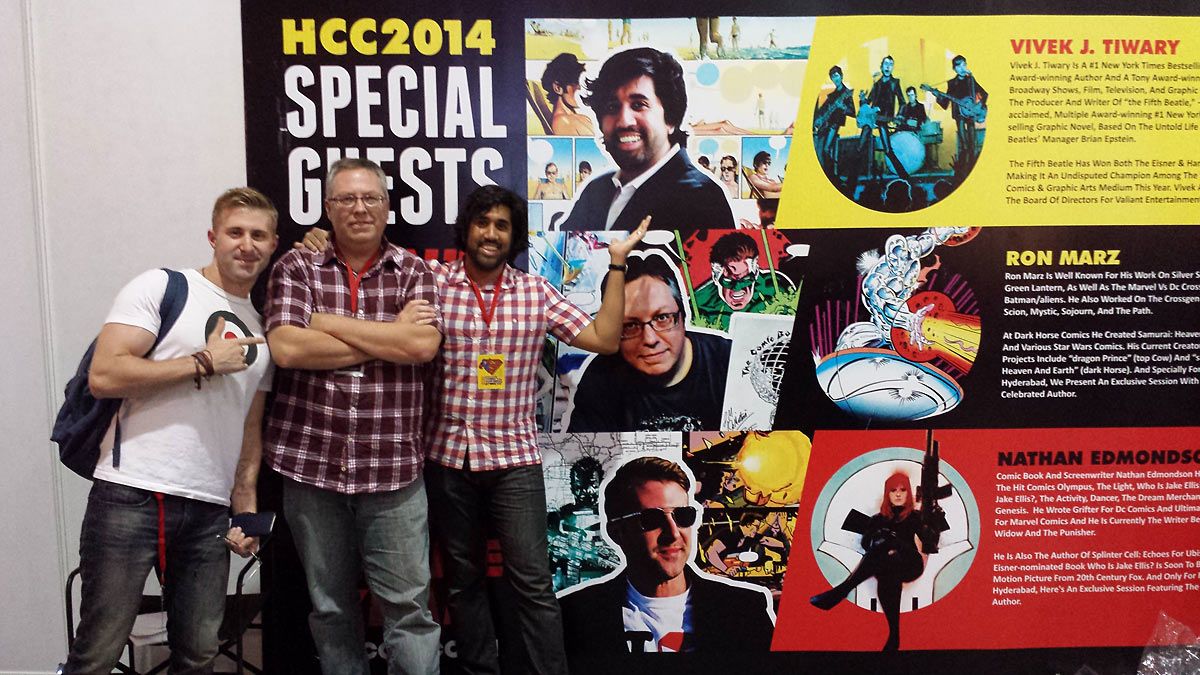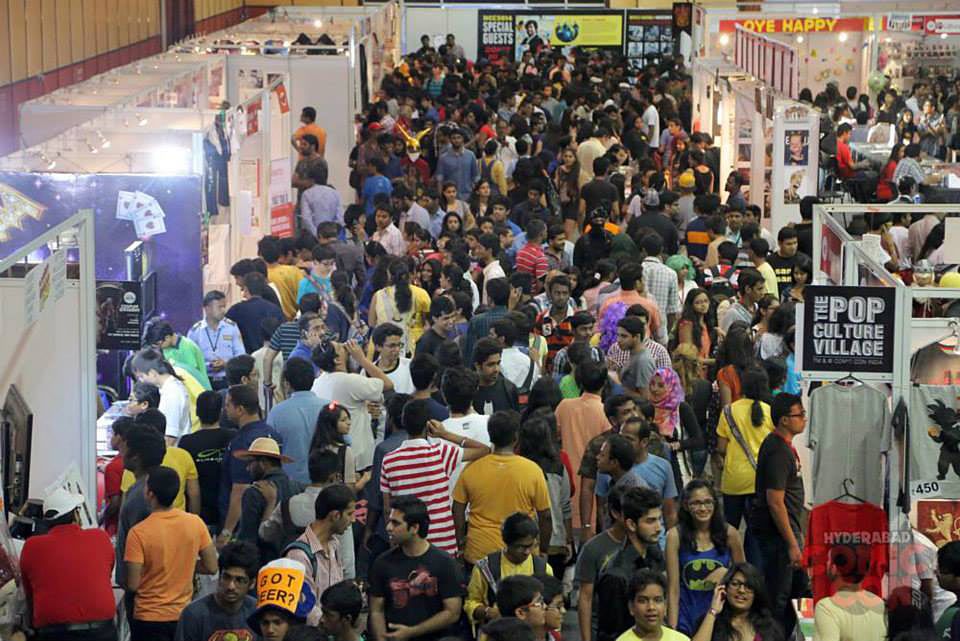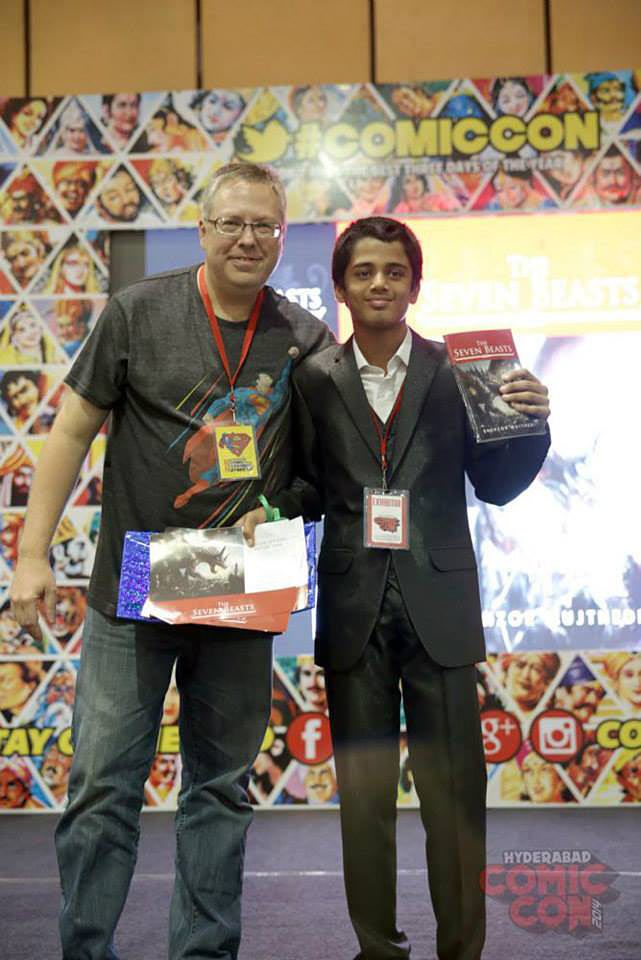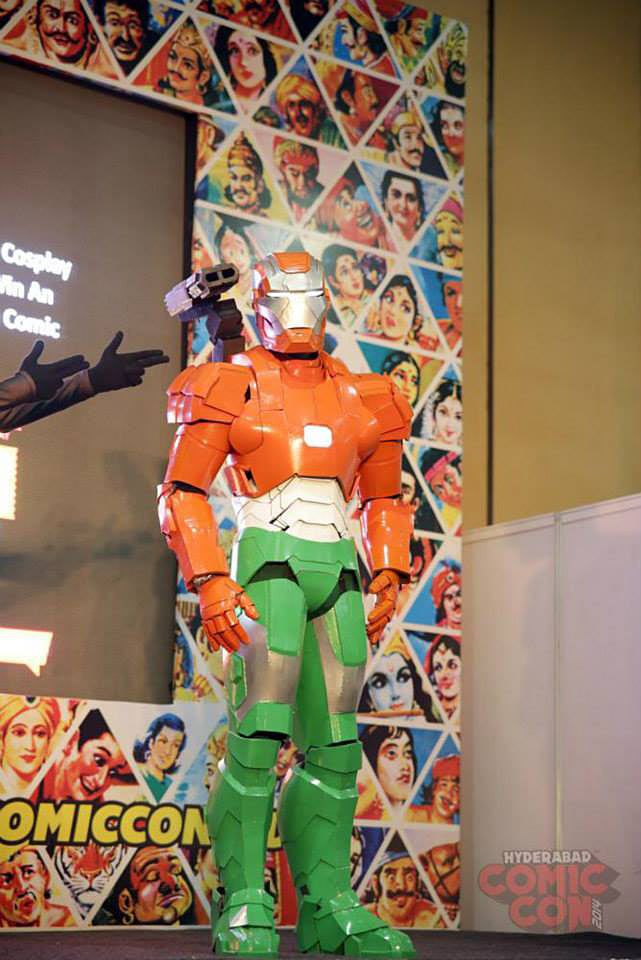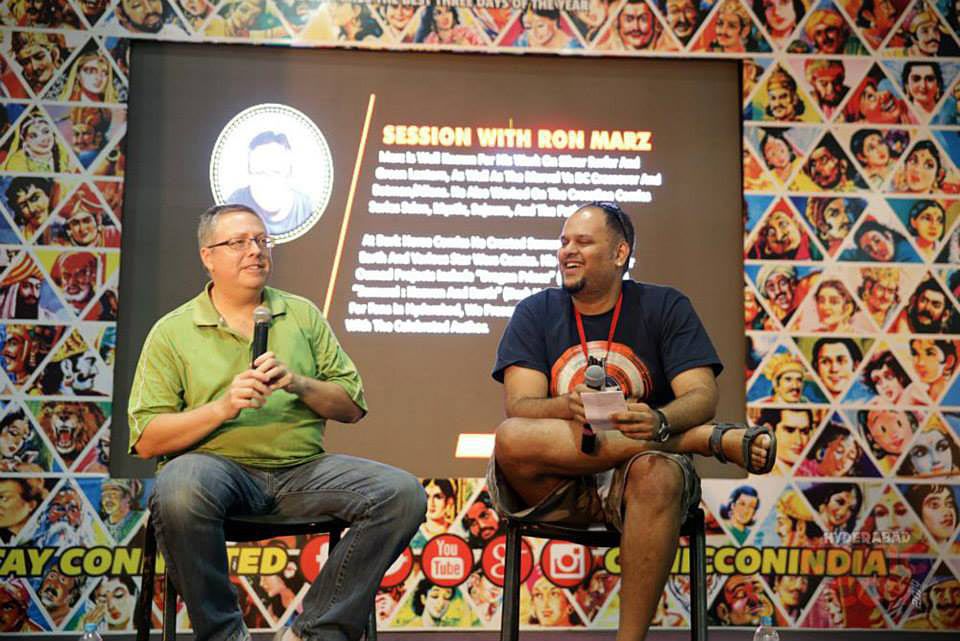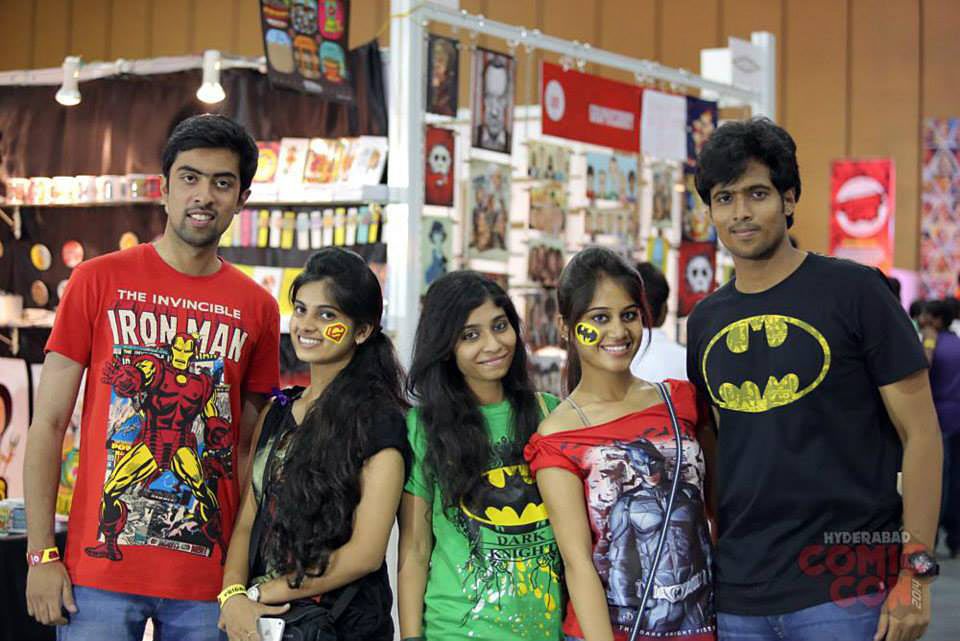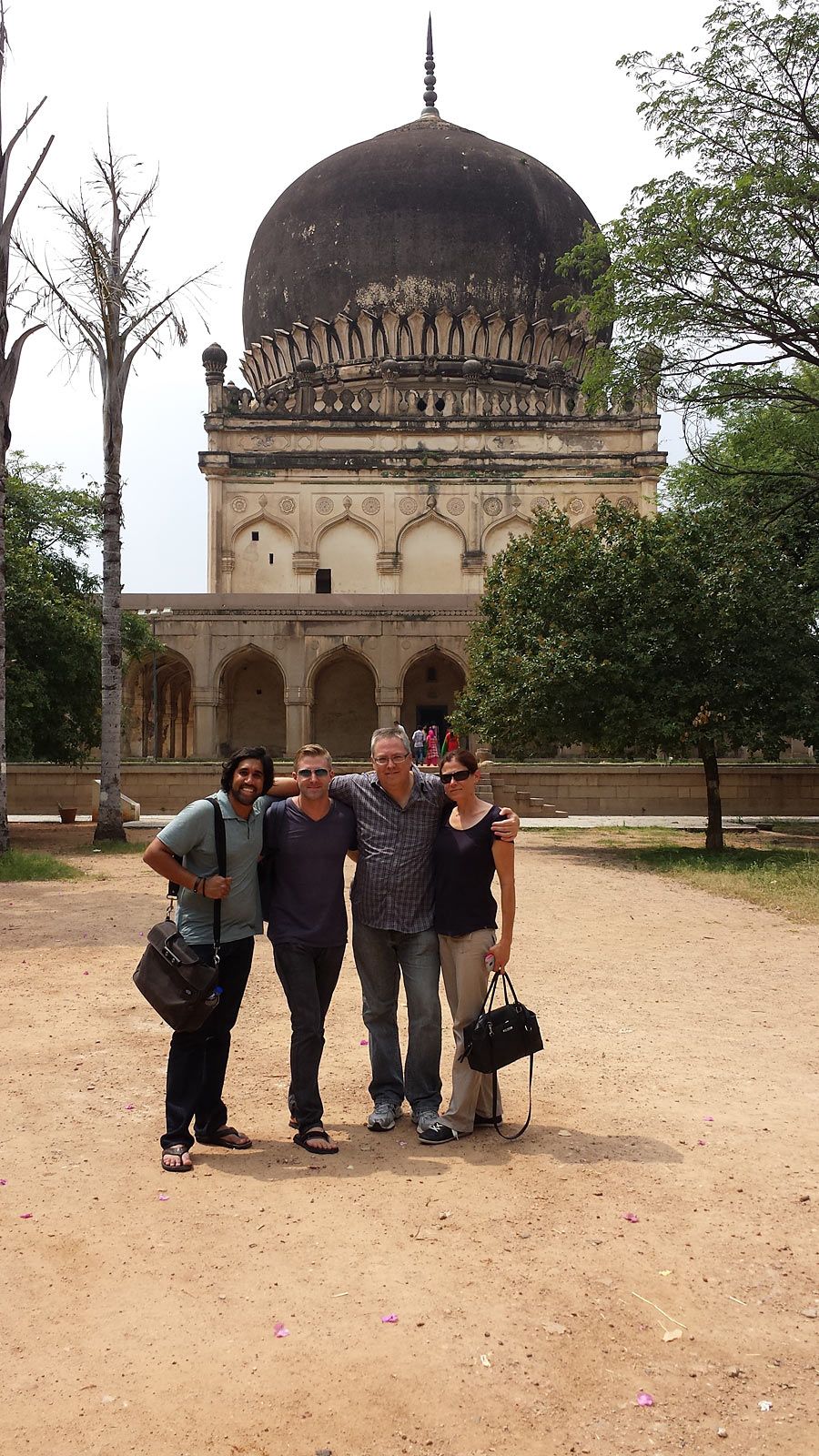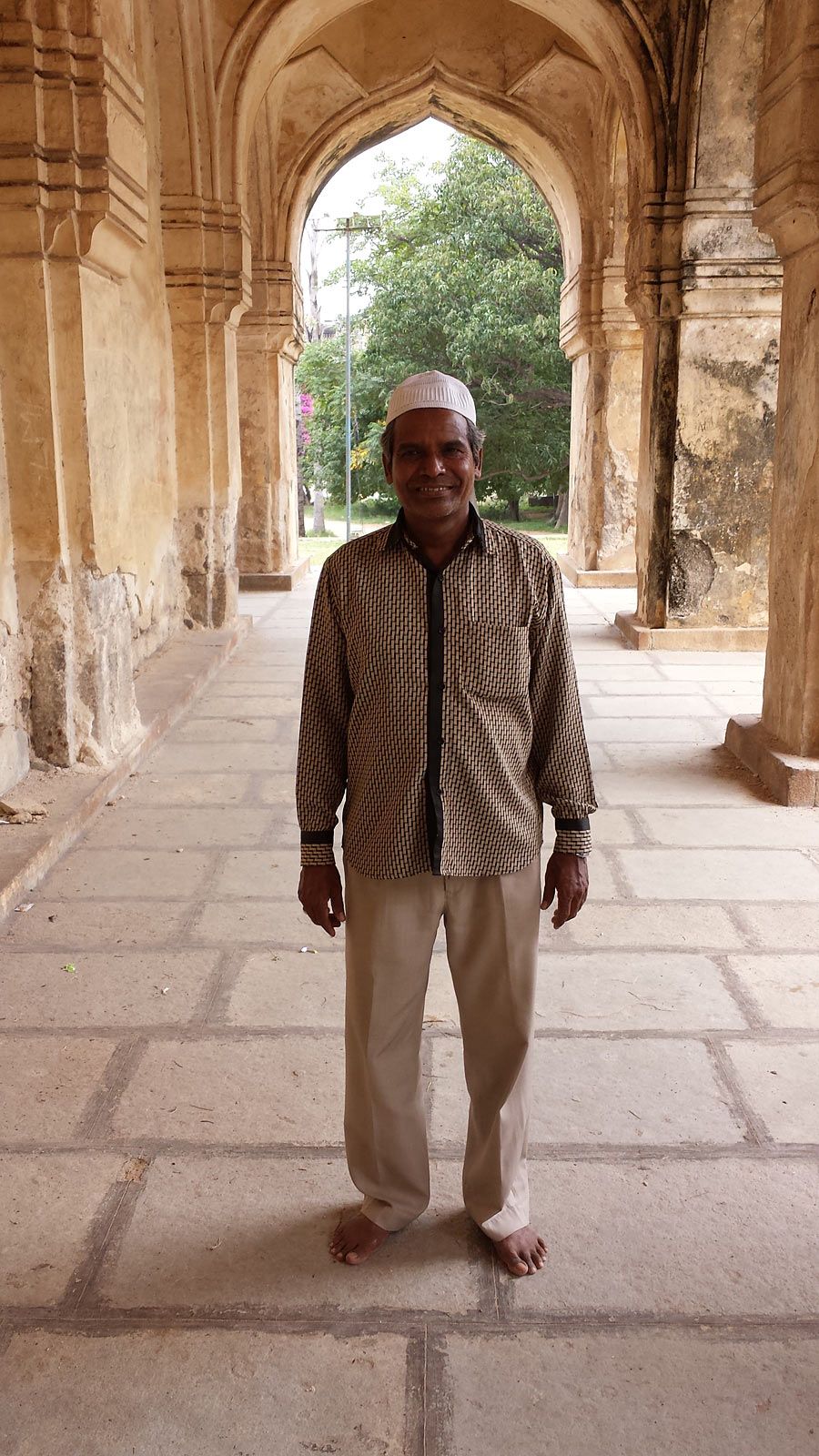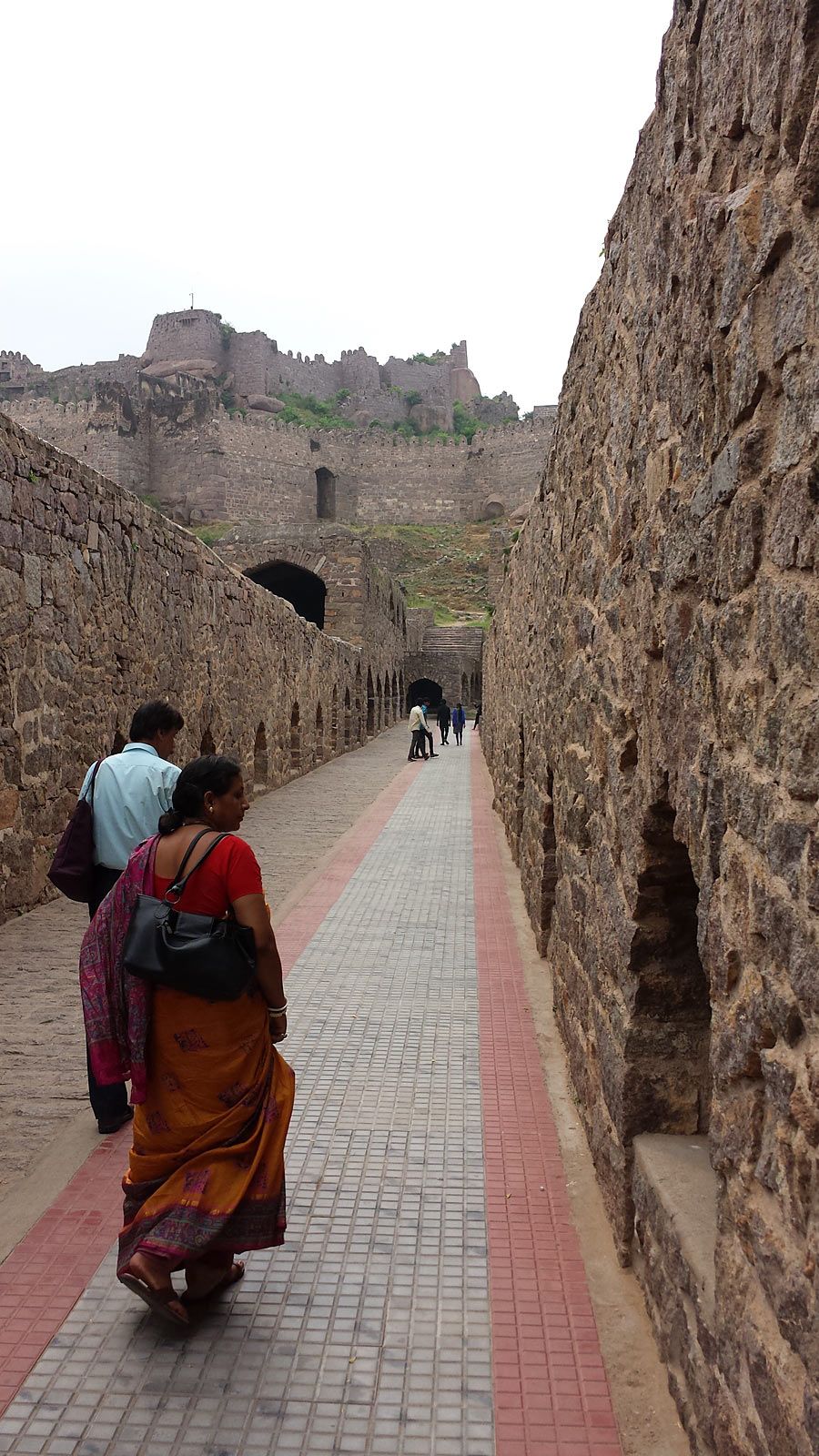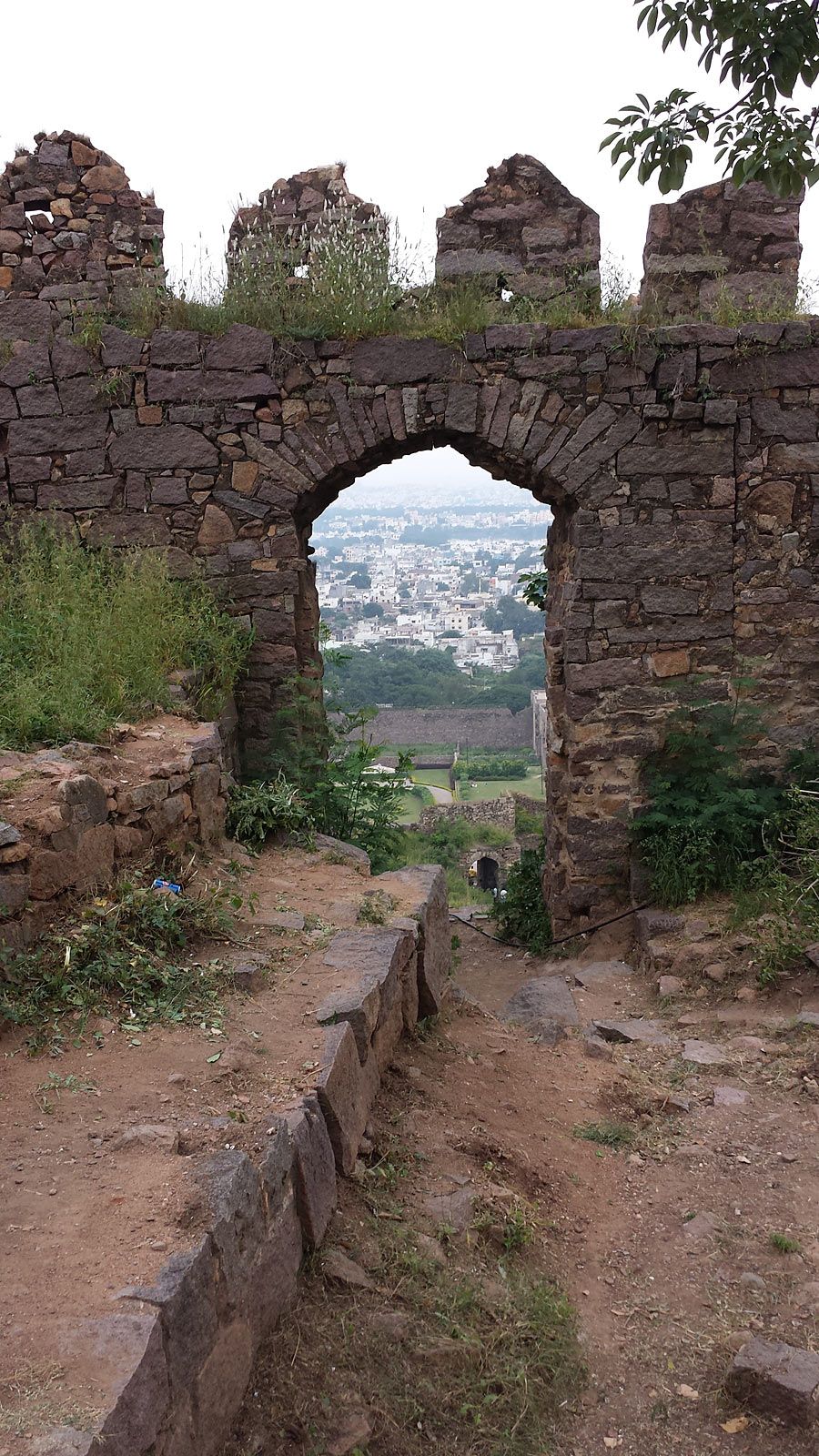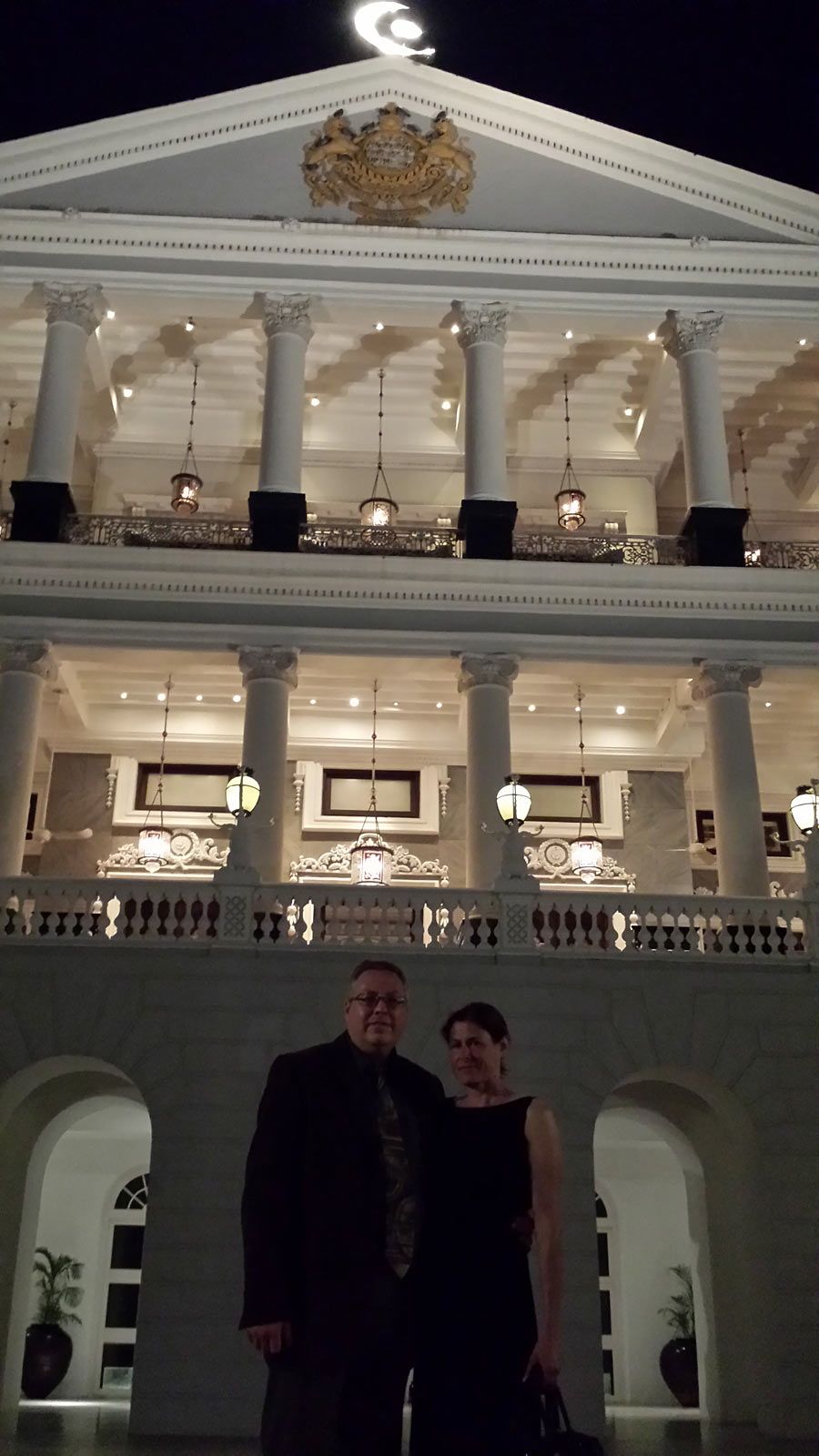An Eye-Opening Passage to India
While most everybody else in the industry was at New York Comic Con a couple weeks ago, I was a guest at a different comic convention. I was literally half a world away, at Comic Con India's convention in the city of Hyderabad, in central India. My head is still spinning.
A 13-hour flight took us from New York City to Abu Dhabi in the United Arab Emirates, where we connected to another flight of more than three hours to reach Hyderabad. I'd never been to India, but had always wanted to visit, especially after doing editorial and writing work with Virgin/Liquid comics, as well as Rovolt Entertainment. I've built friendships with a lot of Indian artists, including penciler Abhishek Malsuni (who is currently drawing the "John Carter: Warlord of Mars" series I'm writing at Dynamite) and colorist Neeraj Menon (who is working on "The Protectors" from Athlita, my Edgar Rice Burroughs weekly strips, and other projects). Both Abhishek and Neeraj attended the show, giving us a chance to meet in person for the first time.
The other two international guests of the show were Vivek J. Tiwary, writer of the award-winning graphic novel "The Fifth Beatle," and Nathan Edmondson, writer of "Black Widow," "The Punisher" and more.
The experience in Hyderabad was unlike any other convention, and unlike any other place, that I've ever visited. I felt immersed in a culture utterly different than my own. But at the same time, I felt a kinship to so many of the people I met, most of them drawn together by a love of comics and pop culture. It was easy to spot "one of us," because they were wearing T-shirts sporting "Star Wars" or "The Walking Dead" or "Batman" designs.
Our hosts at Comic Con India were incredibly kind and attentive. We had a handler, a driver with a private car, a luxurious hotel. We had a sightseeing day prior to the con, during which we were taken to the historical sites Qutub Shahi Tombs and Golconda Fort. Between the two sites, we ate lunch at a local buffet ($2 apiece!), where I looked up to notice the lone TV was playing the credits sequence from "Red 2," featuring the art of Cully Hamner. I'd traveled halfway around the world to see the art of one my best friends on television.
My wife and I also had quite literally the best, most magical dinner of our lives at Falaknuma Palace, a seven-course private feast in the open-air Gol Bungalow, overlooking the twinkling lights of Hyderabad far below.
Hyderabad's traffic was a living thing: cars, trucks, buses, motorcycles and scooters moving in and out like some great, seething organic beast. Lanes were at best a mild suggestion. The soundtrack was the rumble of engines and incessant honking of horns. At one point, our driver bumped a pedestrian who wasn't paying attention to where he was walking, but no one seemed terribly bothered about it. The pedestrian waved dismissively to our driver, our driven returned the gesture, and both continued their separate ways.
The con itself was staged in a fair-sized convention hall, in a larger complex of at least four halls. The interior was sectioned into stalls, with vendors selling everything from American superhero tees to Indian crafts. Signing tables for me, Vivek, and Nathan were set up on a stage, and there was a separate main stage for presentations.
Last year's event in Hyderabad -- the first con ever held there -- was free, no admission charge whatsoever, and attracted more than 20,000 attendees. This year's show carried an admission fee, and attracted 25,000 people over three days. Pretty good evidence that there's a growing comics scene in India. The vast majority of the crowd was young -- high school or college age, with some older.
I can attest that I've never been so busy at a show. Ever. I signed from the minute I sat down at the table until the minute I got up. No breaks in the crowd, not even a lull. The organizers had printed stacks of "Green Lantern" and "Witchblade" giveaway posters, and had to have them re-printed twice during the show. I signed them all -- we ran out again late on Sunday -- and personalized almost all of them. I'm now pretty adept at spelling "Aardash" and "Bhargav" and "Harsha" and plenty of others, though a patient con volunteer sitting on my right made sure I got the spellings right.
Inevitably, when I'm signing at a show, someone (or a few someones) asks, "Your hand hurt yet?" And the honest answer is always no; I have a short, nigh-illegible autograph that I can sign all day. But in Hyderabad, by the end of Sunday, the truth is my hand was pretty sore.
I also posed for more photos than I've ever taken in my career. And I mean collectively. It's only a guess, but I suspect I posed with fans for at least 500 photos over the three days, and that's probably on the low side. My chance to walk around the show floor Saturday got sidetracked when a crowd of 30 or 40 people formed around me, all waiting for photos. That sort of mob scene was definitely something I've never experienced before.
I'm not vain enough to believe it was about me. I think there's a hunger for comics and pop culture. The fans I encountered ran the gamut from those who were very familiar with my work (especially "Green Lantern"), and those who seemed aware I wrote American comics, but that's about it. The commonality, however, was unbridled enthusiasm. A great many people I talked to said this was their first comic con ever... but definitely not their last.
From what I witnessed, it's a burgeoning scene that's only going to expand. My sense is that the Indian comics scene is still small, but growing. It feels like the beginning of something, and driven largely by creators. I asked my coloring buddy Neeraj Menon for his insight.
"Yes, the Indian scene is small, and lot of the publishers you saw at the con have come up just in the past five years or so," Neeraj told me. "And quite a few have been setup by artists and writers, giving them creative control on what they produce. They are all trying their hardest to come up with new and original IPs. And they are producing beautiful work in the process."
Obviously Neeraj has a unique perspective, working in both the U.S. and Indian markets. I asked him to compare the two for me.
"With regards to actual production of work, there is very little difference. I collaborate with the artists or the writer in India the same way I do with teams in the U.S.," Neeraj said. "The actual difference, I feel, comes after the book is ready. It seems easier in the U.S. to the get the word out about a new comic and get people interested. The major difference comes with distribution, which is one of the main reasons keeping the Indian industry from growing. Distributors refuse to carry books to shops around the country, which greatly hampers any sort of progress."
Neeraj pointed me toward the Raj Comics website at http://www.rajcomics.com/
"There are a few big players who have agreed to stock all Indian comic publications on their website. Which is a great initiative and a step in the right direction," he said.

I also asked him about my perception of the con crowd being mostly young (not to mention extremely enthusiastic). I wanted to be sure my vantage of sitting at a table and signing autographs didn't lend a skewed perspective of the attendees. But Neeraj confirmed the younger demographic is the one embracing comics in India.
"That is the crowd that is most exposed to foreign TV and pop culture, and they walk in to experience it firsthand. Which in turn leads them to discovering the comic scene in India," he said.
Neeraj also mentioned the impact of comic book movies, which make an impression in India just like everywhere else.
"There has definitely been a huge impact, as was evident by the huge number of Tony Starks and Bruce Waynes on the con floor. Which, like in the U.S., brings new fans to the characters and the books. Apart from that, the comic book movie boom has also caused a resurgence in the number of homegrown comic book movies. Although they still aren't great, it's heartening to see them take the leap, so to speak."
Finally, I asked Neeraj where he thought the Indian comics market would be in five or even ten years.
"This is a tough one, and I honestly don't know, apart from wishful thinking. The talent is there, and we have amazing stories to tell," he said. "The first thing that needs to change is distribution. The more books actually reach readers, the better the audience. Also, as of now there are just about 15-20 new titles releasing every year. And that's from all publishers put together."
This was my first trip to India. I hope it's not my last. A seed has been planted, and I'd love to watch it grow.
Ron Marz has been writing comics for two decades, and thinks it's pretty much the best job ever. His current work includes "Witchblade" and the graphic novel series "Ravine" for Top Cow, "The Protectors" for Athlitacomics, his creator-owned title, "Shinku," for Image, and Sunday-style strips "The Mucker" and "Korak" for Edgar Rice Burroughs, Inc. Follow him on Twitter (@ronmarz) and his website, www.ronmarz.com.


